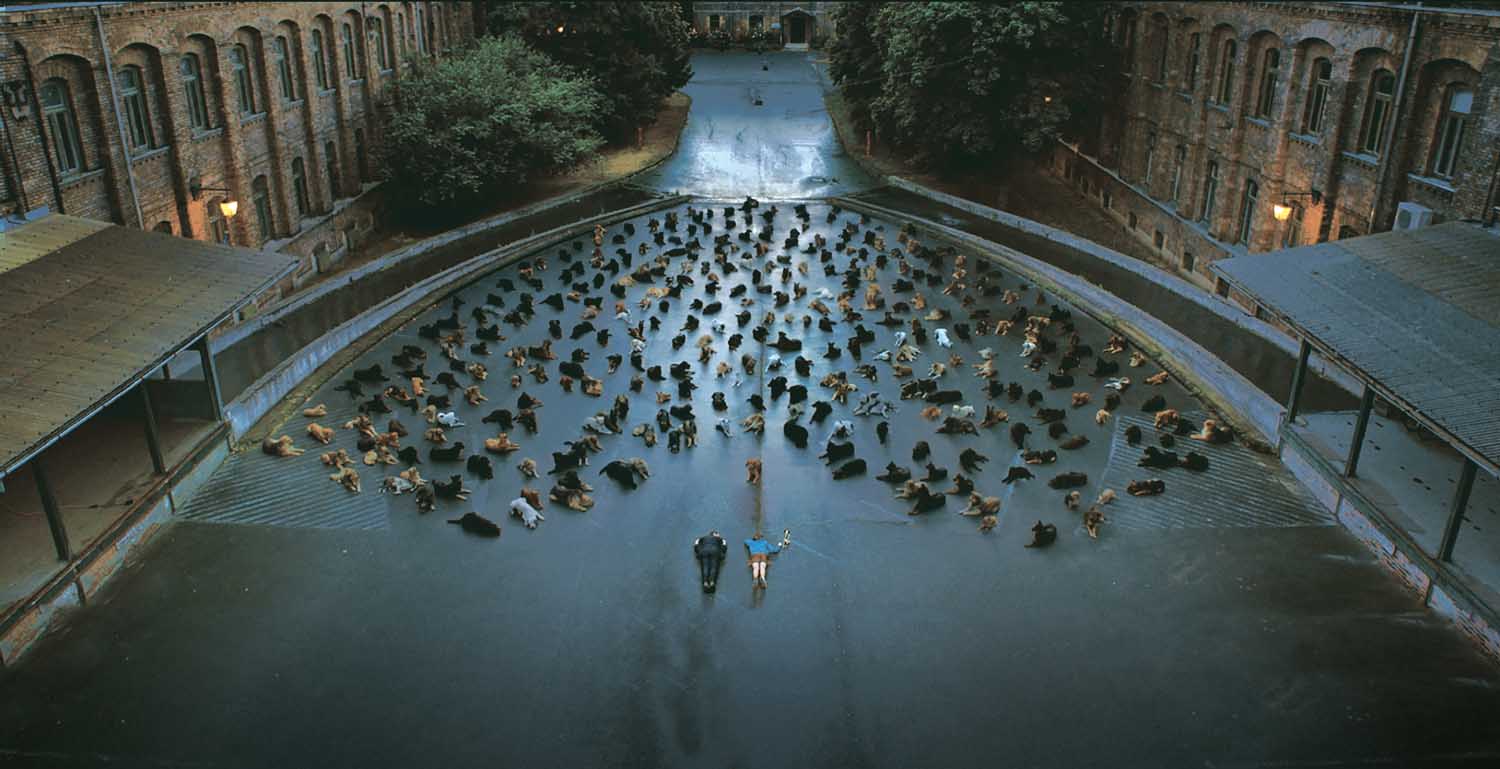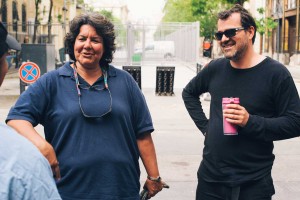
Hagen must survive on the streets, and that’s when the film becomes more harrowing, as the cruelty of homo sapiens is unfailingly on display, in incident after incident. All these are even harder to watch when you realize these aren’t CG dogs – but the real thing.
This becomes even more remarkable once Hagen organizes the other pooches in resistance to their two-legged tormentors.
One of the resources Mundruczó used was American animal trainer Teresa Ann Miller who comes from a family of renowned trainers. She recently spoke with Below the Line about her involvement with the film and with the pooches.
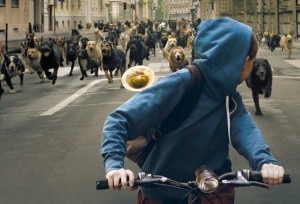
Teresa Ann Miller: I was hired by the production company, Proton Films in Budapest, to coordinate and train the lead dogs. The production had spoken with several European trainers and couldn’t find a one who would attempt this film with an inexperienced “green” dog. I’ve worked in Europe off and on for the last 20 years on the TV Series Kommissar Rex and the production decided to consult with me based on my extensive experience working with animals in the film industry.
Bodie and his brother Luke were hired after a 2 1/2 month search and correspondence with Kornél. We’d exchanged pictures and he would guide me in the direction of the type of dog he had imagined and written. It was clear that due to the extensive role, I would need a photo double to enhance the character on film and help with the schedule. In this particular case, the casting of the dog wasn’t based on his abilities but on his unique appearance. The director wanted a dog that could stand out in a pack of 200. I had found a nice team of Rhodesian Ridgeback mixes but Kornel wasn’t completely sure of their expression and asked that I give it another week of searching.
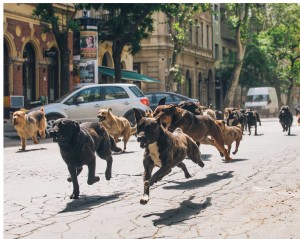 Sure enough while continuing to search online, I came across a new posting in Arizona and the picture showed the two brothers together that were not only great doubles but incredibly unique looking. They were 10 month old Sharpei and Lab mixes, with a little Hound, based on their love of howling! They were raised with children but had never been out of their front yard. I drove to Arizona, took pictures and video to send to Kornél and he approved. His next question to me was “could these young dogs accomplish this film?” and I said that I felt I could do it with the available preparation and training time.
Sure enough while continuing to search online, I came across a new posting in Arizona and the picture showed the two brothers together that were not only great doubles but incredibly unique looking. They were 10 month old Sharpei and Lab mixes, with a little Hound, based on their love of howling! They were raised with children but had never been out of their front yard. I drove to Arizona, took pictures and video to send to Kornél and he approved. His next question to me was “could these young dogs accomplish this film?” and I said that I felt I could do it with the available preparation and training time.
BTL: So how did you coordinate with the trainer in Hungary?
Miller: Work with trainer Arpad Halasz and his Hungarian team started via Skype in a sit down meeting with the department heads. This gave us the opportunity to address concerns, scheduling and accomplishments every 2-3 weeks. After 16 weeks of training in Los Angeles, we packed everything up and moved to Budapest. Immediately we met with the Hungarian team and began introducing our dogs to the various packs of dogs Arpad had formed. We had two weeks before filming and my dogs had to learn to mingle with those established dog groups and also learn when to ignore those same dogs while filming.
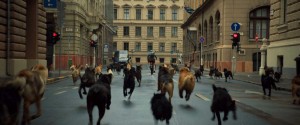 BTL: How did you steer the four-legged actors through those intense dog fighting scenes?
BTL: How did you steer the four-legged actors through those intense dog fighting scenes?
Miller: The simulated dog fight was created by introducing the two dogs to each other in Los Angeles. We would have play dates 3-5 days a week in a fenced area. Luke and the Rottweiler didn’t get to see each other unless they were in the “arena” and they loved to wrestle. The production actually built the set for us four weeks in advance so we could make the “set arena” their new playground. Each week that set was dressed more completely and we invited people to come watch them play to get them used to the crowd. We filmed short sequences of the wrestling match over the period of a week at that location to get the maximum amount of footage. The lighting, camerawork, make up and sound effects really sell the dark vicious scene.
BTL: And in contrast to the fight, how’d you get that last, sustained shot of all the rebelling dogs lying down together… in silence?
Miller: The end shot of the 200 dogs lying down together in silence was accomplished by making a plate of 50 dogs and reusing it four times. It was still a challenge to keep 50 dogs together and still, but it was accomplished by training small groups of five and then 10 dogs each and gradually mixing the groups together. Still, a difficult task to do in the middle of a film set and working environment.
The real life stories of the dogs had a happy ending as well. Most were street dogs and strays, found for the production, and then all placed in homes after the production was wrapped.
No word yet on whether the original canine cast would agree to be reunited for a sequel.
White God opens in New York on March 27 and in Los Angeles on April 3 with a national rollout to follow.

